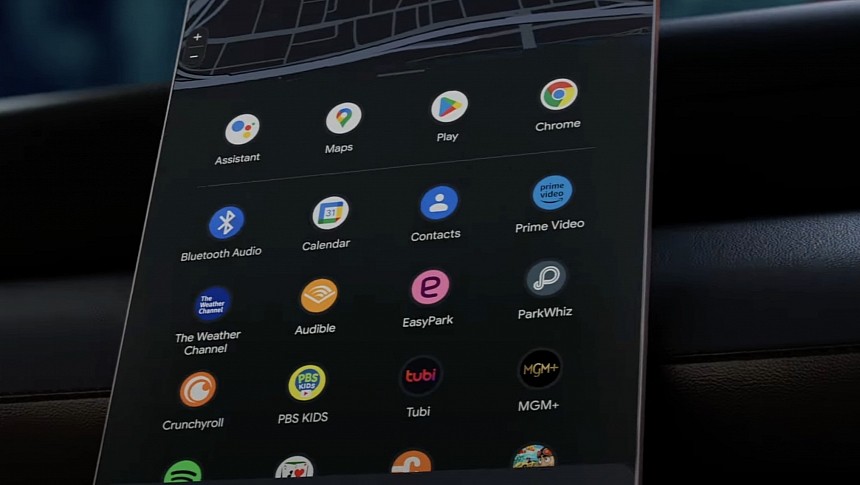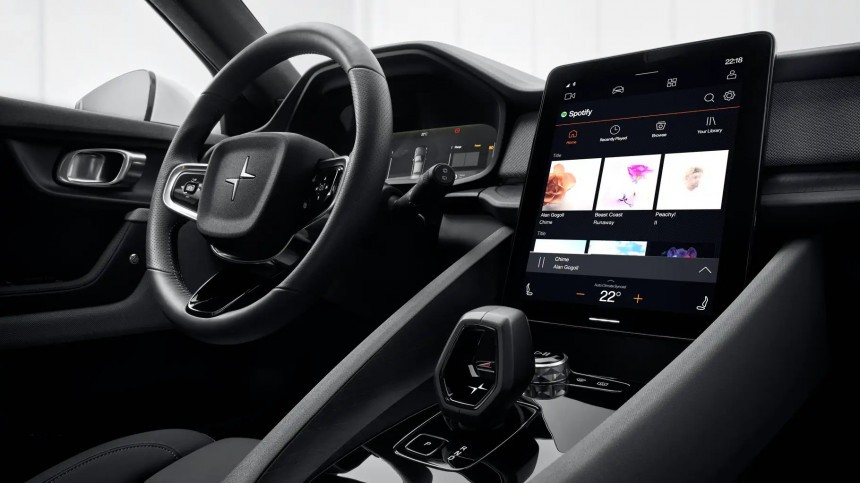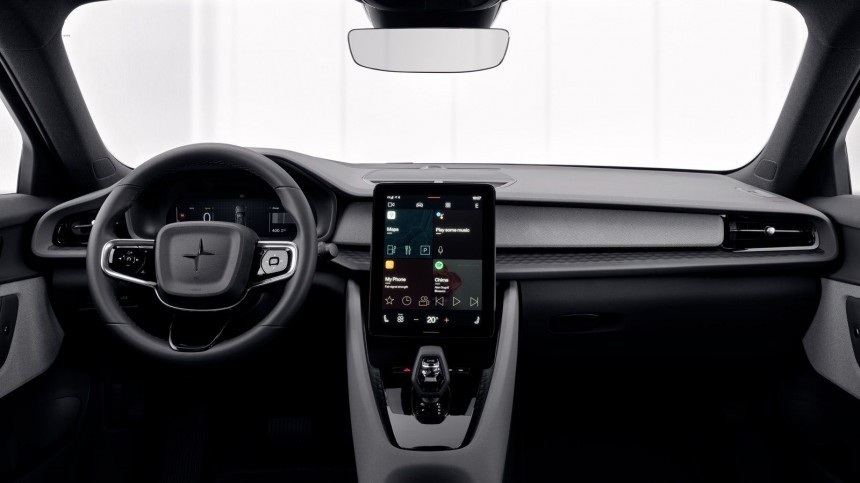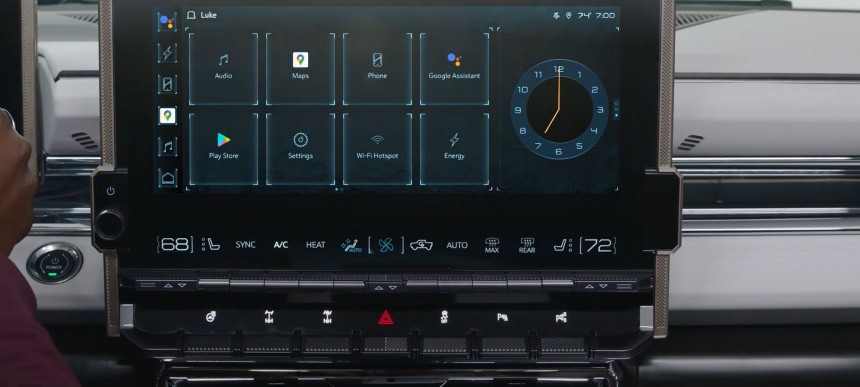Android, Android Auto, Android Automotive, Google Automotive Services. The nomenclature is a mess, causing so much confusion in the Google world that some people don't even know what they use behind the wheel.
Android Auto is a phone-powered experience that runs in vehicles with compatible head units. It's a way to mirror the mobile phone to the larger screen in the cabin, allowing users to run apps like Google Maps and YouTube Music.
Android Automotive is a fully featured operating system with an upgraded purpose. It runs at the hardware level and is the platform powering infotainment in the car. It can't be retrofitted in a vehicle, so the carmaker must install it before the car rolls off the assembly lines. It offers more advanced capabilities, mainly because it benefits from deeper vehicle integration, so you can control the climate system with voice commands via Google Assistant.
Google Automotive Services, or GAS, are a pack of Google services available with Android Automotive and including apps like Google Maps and Google Assistant. Android Automotive can also be installed in a car without GAS, though the carmaker would have to find alternatives to all Google services, including an app store and a navigation solution.
All these products have one term in common: Android. They are all supposed to provide users with the familiar Android experience, allowing them to be part of the ecosystem even when leaving their phones behind.
It's been Google's plan for years, as all these platforms weren't supposed to replace Android but be a part of it. All products were meant to expand the Android ecosystem, offering consistency across devices and making the transition smooth and seamless for users. Eventually, they were supposed to keep users committed to the Android ecosystem beyond the mobile device.
It's not a secret that Android is Google's star product, and the company has already conquered the mobile world. However, winning the minutes and hours we spend behind the wheel is much harder and involves creating software that makes sense for users. Google wanted Android to conquer this space, too, but considering drivers were supposed to leave the mobile devices behind, the mission wasn't simple.
Like CarPlay, Android Auto was a great way to do this. Android Automotive is a newer attempt and is slowly gaining traction in the car space. However, Android Auto and Android Automotive have been struggling with a gap that made them second-class citizens of the Android ecosystem.
Android Auto has always felt like a separate Google product. While it offered access to apps installed on an Android device, it lacked the features that would have allowed for a seamless transition from the smartphone to a car offering this experience. Throw bugs, the lack of changelogs for new versions, and no Google response when a widespread bug emerged turned Android Auto into ugly software that had little in common with Android.
Now, Google is finally trying to bring Android, Android Auto, and Android Automotive in sync.
The company is developing new features that will make switching devices more seamless, beginning with options to allow data to roam from the mobile device to the car.
Not long ago, it was discovered that Android Auto would get support for mobile phone wallpapers and the default icon pack. The phone wallpaper will be used as a background on the Android Auto app drawer, while the default icon pack will replace the traditional and already old-fashioned Android Auto icons.
Now, Google has announced that Google Maps would be able to access more vehicle data when running on Android Auto, including the battery range. It's a feature Google Maps has been offering on Android Automotive for quite some time.
Android Automotive will also get support for new capabilities powered by the mobile device where the full Android version runs. Google will let users plan routes, configure stops on their mobile devices, and transfer the data to Android Automotive when ready.
Google says it's already working with more carmakers to install Android Automotive in their cars, including Nissan, Ford, and Lincoln. Others have already decided to go all-in on Android Automotive. General Motors decided to install Android Automotive in all its new cars, beginning with the 2024 Blazer EV, blocking Android Auto and CarPlay. The company claimed the decision was based on its desire to offer an upgraded experience, though experts believe GM is already paving the way for a subscription-based model.
Google's final goal is to keep users connected to the Android ecosystem without the Android smartphone. It's not easy, but the company is getting there, and these improvements that bring all platforms in sync are a step in the right direction.
Now, Google must focus on the things that fuel the frustration behind the wheel, including the terrible number of bugs on Android Auto and the lack of apps on Android Automotive.
Android Automotive is a fully featured operating system with an upgraded purpose. It runs at the hardware level and is the platform powering infotainment in the car. It can't be retrofitted in a vehicle, so the carmaker must install it before the car rolls off the assembly lines. It offers more advanced capabilities, mainly because it benefits from deeper vehicle integration, so you can control the climate system with voice commands via Google Assistant.
Google Automotive Services, or GAS, are a pack of Google services available with Android Automotive and including apps like Google Maps and Google Assistant. Android Automotive can also be installed in a car without GAS, though the carmaker would have to find alternatives to all Google services, including an app store and a navigation solution.
All these products have one term in common: Android. They are all supposed to provide users with the familiar Android experience, allowing them to be part of the ecosystem even when leaving their phones behind.
It's not a secret that Android is Google's star product, and the company has already conquered the mobile world. However, winning the minutes and hours we spend behind the wheel is much harder and involves creating software that makes sense for users. Google wanted Android to conquer this space, too, but considering drivers were supposed to leave the mobile devices behind, the mission wasn't simple.
Like CarPlay, Android Auto was a great way to do this. Android Automotive is a newer attempt and is slowly gaining traction in the car space. However, Android Auto and Android Automotive have been struggling with a gap that made them second-class citizens of the Android ecosystem.
Android Auto has always felt like a separate Google product. While it offered access to apps installed on an Android device, it lacked the features that would have allowed for a seamless transition from the smartphone to a car offering this experience. Throw bugs, the lack of changelogs for new versions, and no Google response when a widespread bug emerged turned Android Auto into ugly software that had little in common with Android.
The company is developing new features that will make switching devices more seamless, beginning with options to allow data to roam from the mobile device to the car.
Not long ago, it was discovered that Android Auto would get support for mobile phone wallpapers and the default icon pack. The phone wallpaper will be used as a background on the Android Auto app drawer, while the default icon pack will replace the traditional and already old-fashioned Android Auto icons.
Now, Google has announced that Google Maps would be able to access more vehicle data when running on Android Auto, including the battery range. It's a feature Google Maps has been offering on Android Automotive for quite some time.
Android Automotive will also get support for new capabilities powered by the mobile device where the full Android version runs. Google will let users plan routes, configure stops on their mobile devices, and transfer the data to Android Automotive when ready.
Google's final goal is to keep users connected to the Android ecosystem without the Android smartphone. It's not easy, but the company is getting there, and these improvements that bring all platforms in sync are a step in the right direction.
Now, Google must focus on the things that fuel the frustration behind the wheel, including the terrible number of bugs on Android Auto and the lack of apps on Android Automotive.













